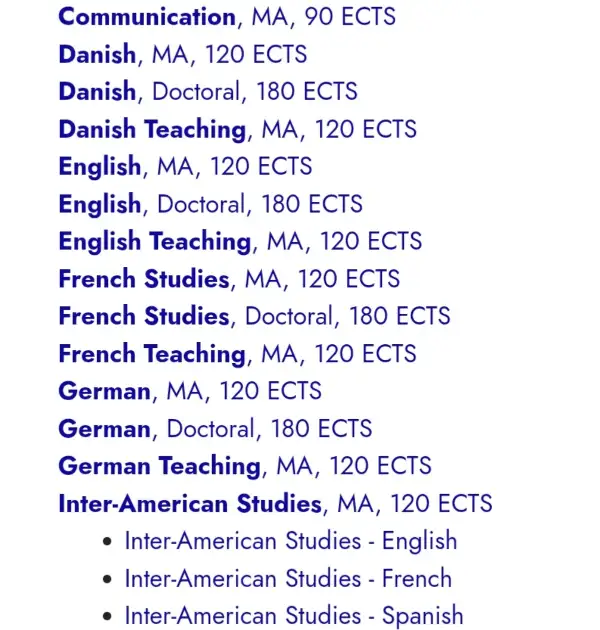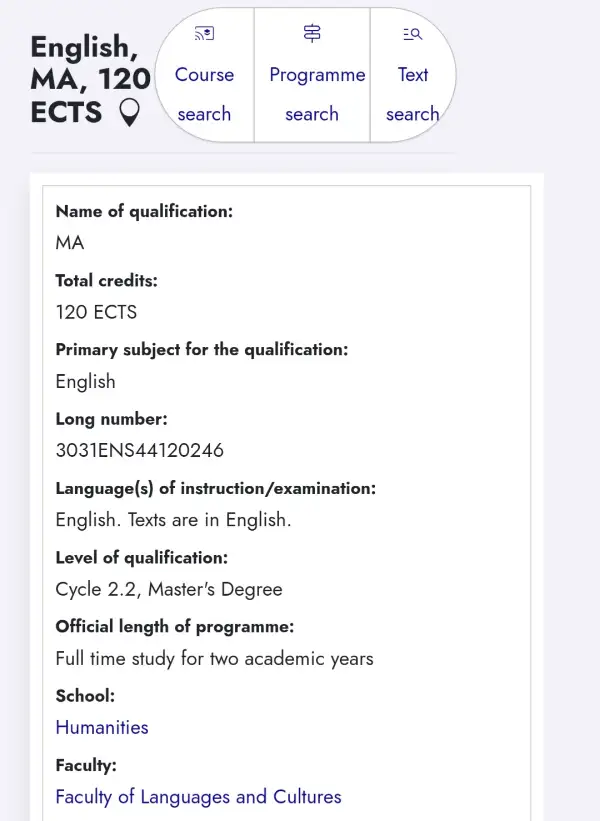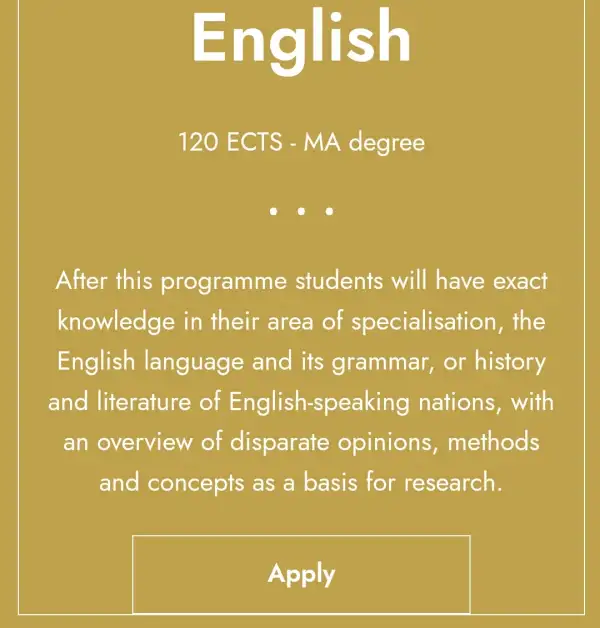You don’t have to spend money on tuition abroad. As such, we will be talking about Iceland, a cold country in the Nordic region that brings you an opportunity to study without tuition fees. This post is basically going to be about how to study in Iceland for free, and I will also disclose all the required documents you need to get started.
Now, when we say ‘Iceland is free’, we are referring to the tuition. In Iceland, you don’t pay tuition fees. However, there are other fees you have to pay, including an application fee (for applicants outside the EEA/EFTA region) and a registration fee. The application fee is generally ISK 8,000 (~$60) while the registration fee is an annual fee of ISK 75,000 (~$548). The only downside is that most of the courses are taught in Icelandic language but we have some in English. Don’t worry, I’ll show you how to find those English-taught programmes.
I’ll guide you through the process of applying to the University of Iceland (Háskóli Íslands) for free. We will also cover the documents required for the whole application process, so, stick around for all the important information.
How to Study in Iceland for Free
1. Pick a Public University to Apply to
There are 7 universities in Iceland, with four state universities and three private, non-profit organisations. The largest are the University of Iceland and Reykjavík University (both in the capital), followed by the University of Akureyri. However, in this guide, I’ll be showing you how to apply to the University of Iceland and study for free. Another university you can apply to is the University of Akureyri.
2. Find an English Taught Programme
If you can speak and understand Icelandic, there are so many courses for you to pick from and study at the University of Iceland. If you are from an English region, and not willing to learn Icelandic, then you need to pick an English language taught course. The only problem is that programmes taught in the English language are very limited here in Iceland.
So, how do you find out which courses are taught in English? It’s simple! Go to english.hi.is/, and you’ll find out about the international programmes offered here in Iceland. For specific programmes taught in the English language, go to ugla.hi.is/, here, you’ll find the respective programmes you can learn in English. There are many programmes under Education, Engineering and Natural Sciences, Health Sciences, Humanities, Social Sciences, and Interdisciplinary Postgraduate Studies. So, if your preferred programme is listed here, you are in luck and should start preparing to study in Iceland for free.
When you look at the list of programmes the university offers, we can see that it’s not just focused on STEM (Science, Technology, Engineering, and Mathematics) subjects. There are plenty of Social Sciences and Arts programmes too.
3. Apply for Admission
The application deadline for international students, except exchange students, to apply for undergraduate and graduate studies is 1 February every year. However, your certified transcripts of records and previous degree diploma (in hard copy) should be received by the University before 15 February.
So, how do you apply for your specific course? Pay attention because this will include screenshots. For this post, we will be looking at how you can apply to the English MA programme at the University of Iceland. This is just for example, which you can follow for any other courses you want to study in Iceland for free.
First, I’ll go to the course catalogue page. You’ll see many courses here, but make sure you only select a course offered in English if you don’t know the Icelandic language. I gave you a link earlier to find English-taught courses. When you open this course catalogue, you should see something like:

As you can see, there is an English Masters on the list. Also, English MA is one of the courses taught in the English language. This programme requires 120 ECTS credits to complete. In Europe, they use ECTS credits to measure how much work you need to put in to graduate from a programme. So, for English, you need 120 of these credits. The structure of the master’s programme is split into two main parts: 60 ECTS credits are dedicated to coursework. This means you’ll have lectures and classes covering various subjects, usually broken down into 5 ECTS credits each. So, you should be looking at around 12 different courses. Then, the other 60 ECTS credits are for your master’s thesis, which is a research project. This setup will give you a strong foundation in research, and prepare you for a PhD if that’s your goal.
Now, I click on the English MA and it takes me to the new page that looks like:

Here, you can see the level of qualification is Cycle 2.2, master’s degree and the length of the programme is full-time for 2 years. You can scroll down to the bottom of the page to see all the courses you’ll offer for the first and second years.
Now, when you are ready to apply, you’ll go to the International Programmes page which I mentioned earlier. You can scroll up and click on that. On that page, you’ll see options for Undergraduate studies, Graduate studies, and Doctoral studies. So, for this post, I clicked the graduate studies option because I’m looking at MA. Then I selected English MA (since I’m using English as an example). You should find something similar to this:

Now, just click the ‘Apply’ button. After clicking ‘Apply,’ the next page will greet you with ‘Welcome to the University of Iceland.’ The application period for international students is typically between 12th December – 1st February. If you are reading this guide during this period, you’ll be able to complete your application from here.
This is an annual process, and it happens just once a year, so make sure to apply between December 12th and February 1st. For residents of Iceland or those from the European Union, the application deadline extends to April, Ist.
4. Pay the Application Fee
This application process will require you to pay an application fee if you are an applicant outside the EEA/EFTA region. The application fee is generally ISK 8,000 (~$60). So, when you click on the application button in the previous step, you’ll find a portal for communication. For the University of Iceland, you just need to set up a new account. Put in your email, confirm it, and then a link will be sent to the email you used. After that, you’ll get an ID number.
Make sure to read through all the details carefully and fill out every section that applies to you. If you are ready to submit, click on ‘Send application.’
After submitting your application to study in Iceland for free, you can view its status by going to the ‘Applications – overview’ tab. This tab allows you to check on your application or keep an eye on its progress throughout the application process. If your application is successful, this is also where you’ll go to pay the registration fee which is an annual fee of ISK 75,000 (~$548).
For any supporting documents that need to be included, you just have to upload them in the designated area on the application form. So, the next segment of this topic will talk about the documents you need to apply to study in Iceland without paying any tuition.
If you ever lose your ID number, you’ll need to get in touch with the admissions office.
Documents Needed to Study in Iceland
Let’s now talk about the documents you need and how to apply to this school. Let’s say you are applying for a master’s programme. As mentioned before, the deadline for applications is February 1st. So, let’s see what documents you will need to get ready. You’ll need your personal information, like your international passport because you’ll need it to start the process. Other documents include the following:
Reference Letters
You’ll need references from two of your professors. Often, this includes the professor who oversaw your bachelor’s thesis and any other faculty member.
CV
Okay, so you’ll also need to include some additional documents like your curriculum vitae (CV) and a statement of purpose. If applicable, you should also have a scanned transcript and a copy of any grant or scholarship applications. Now, let’s talk about the curriculum vitae. I always suggest using a Europass CV. For this, you can visit the website europa.eu/europass createeuropass CV to get started. It’s very simple. On this website, you will create an account for yourself. After that, you fill in all your details.
A Europass CV includes a photo and all your information, from your education to your work experience. It’s very detailed, which shows your progress, whether in education or work experience.
Statement of Purpose
Next, let’s talk about the statement of purpose (motivation letter). Here, you will provide a brief explanation of why you are applying to the graduate programme. Your statement should be between half a page to one page long. Pay close attention to this instruction, and follow it exactly. Don’t even feel tempted to write more, maybe even two pages, because you are enthusiastic, motivated, or whatever. No matter how well-written your statement is, if it doesn’t meet the specified length requirement, it won’t be accepted. Remember, the admissions committee will be reviewing many applications from all over the world.
They are looking for applicants who can be direct and concise. Why is this necessary? They have highlighted key points for you to cover: mention the issues and challenges you aim to tackle, like ‘I want to address these specific problems in my country,’ outline your professional objectives, and explain briefly why you chose the University of Iceland, perhaps because it’s highly regarded in your field. Your statement should be in English and submitted as a PDF file.
The purpose of this letter is to show the admissions committee why the programme needs you just as much as you need them. So, go ahead and share your story, alright? Why did you pick Iceland as the place to study? What drew you to Iceland? What made you choose the specific field you’re going into, what captivates you about it, and what do you envision for your future?
Transcript
For those who haven’t applied for their transcript yet, I really encourage you to do so. It’s an incredibly important document if you want to study or move abroad for education. About your transcript, here’s how you need to submit it. First, you should submit a scanned copy online through the portal we have talked about. Once you enter your information and select a programme, you can upload your transcript there.
Then, for the second part, you need the official and original hard copy. You should go to the Exams and Records Unit at your school and say, ‘I’m applying to this specific university. Please send it to this address: University of Iceland, Student Registration, International Application.’ So, you’ll send the original copy, which the university will then process and forward on your behalf. The University of Iceland typically needs to receive your transcript before 15 February.
Letter of Recommendation
When filling out the online application form, you need to include the names, phone numbers, institutions, and email addresses of two people who can vouch for you, your referees. Each of these referees needs to write a letter of recommendation for you. You should ask them to send their letters directly to the University of Iceland. Now, there are two ways they can submit this letter, but the preferred method is electronically, by email. They should send it to admission@hi.is, and make sure to include ‘Graduate Programme’ in the subject line along with your name or any other programme applicable to you. For example, if you are applying for English, mention that and also your name. This way, the admissions team will know which applicant the recommendation is for.
English Language Proficiency Test
Many schools, especially in Europe, have English language requirements. For people from countries like India, Nigeria, Ghana, Kenya, and Uganda, despite having local languages, English is the official language. So, if you have completed a bachelor’s programme, it’s likely you were educated entirely in English during your university years. What you need to do is contact the Exams and Records Unit at your university and ask them for a document called a Medium of Instruction. This document confirms that you completed a 4-year bachelor’s programme in a specific field and received instruction entirely in English. Usually, with this form, you can be exempted from submitting TOEFL or IELTS test results.
Now, they typically ask for TOEFL or IELTS Academic scores. However, there’s an exemption if ‘You have completed at least one full year of full-time higher education taught in English at an accredited educational institution in a majority English-speaking country,’ such as the UK, US, Ireland, New Zealand, Australia, or Canada. But, even if you are not from these countries, your Medium of Instruction can still be accepted. Just make sure to include this document with your application materials.
Conclusion
So, we have really been in-depth about how to study in Iceland for free in this guide. If you follow this guide and also ask questions here, you will be able to complete the necessary steps without mistakes. Also, when you get to the page of your specific course, you’ll find the dedicated email for your faculty—send them an email about any questions you may have.
For this guide, I used English MA, but the process is the same for all other programmes. I believe that you have managed to pick up a thing or two from this about how to apply to study at a university in Iceland, the programs you can apply for in English, and some of the documents you’ll need.
Read Also: Countries Where Tuition is Free for International Students

